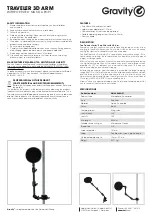
Chapter 5 Web-Based Operations
150
Lynx DSA User's Manual - 9240227J
B. Communications Setup
This appendix includes an abbreviated “Quick Start” summary for the Network
Administrator to summarize a few network-connection requirements associated with
the Lynx to establish an initial connection.
You, the administrator, will need to establish an initial connection with Lynx in order
to make setup changes unique to your installation so that the Lynx can eventually be
accessed through your company’s network. Typically this is a one-time, temporary
setup using your existing PC to interact with the Lynx.
Communicating with the Lynx
The Lynx can be controlled from your PC running Genie 2000 software, Apex
software, ProSpect software, or your custom application. The Lynx can also be
controlled using a web browser and accessing the Lynx’s user interface from your
PC, tablet, or equivalent as described in the chapter
Getting Started
on page 8.
The Lynx supports Ethernet (TCP/IP protocol) network connections, USB (RNDIS
protocol), and Serial RS-232C (RAS protocol) control. For performance reasons, ease
of connectivity, reliability, and interface availability, the preferred connection method
is Ethernet. Please refer to
Lynx Access – Default Settings
on page 65 for additional
information on each connection method using factory settings, with guidance on how
to setup the communication adapter on the computer side.
Factory Settings for Lynx
All access methods for the Lynx require a an IPV4 address. The factory default
settings for each network connection method are:
Ethernet (default, preferred):
……………
10.0.0.3
USB:
……………………………………
10.0.0.2
RS-232 Serial/Modem:
…………………
10.0.0.1
The subnet mask value for each of the above is
255.255.255.0
.
To connect with the Lynx, you will need a User name and password. The default
Lynx User name is
administrator
, and the default password is
password
for the
Ethernet and the USB connections. In order to access the Lynx DSA for the first
time, you must decide on which method of network communication you intend to
use.
•
Direct Ethernet (preferred) using the “crossover” CAT5 cable (red) from
your PC to the Lynx; later, use the
“straight-through” CAT5 cable (color may
vary) to connect the Lynx to your network.
















































